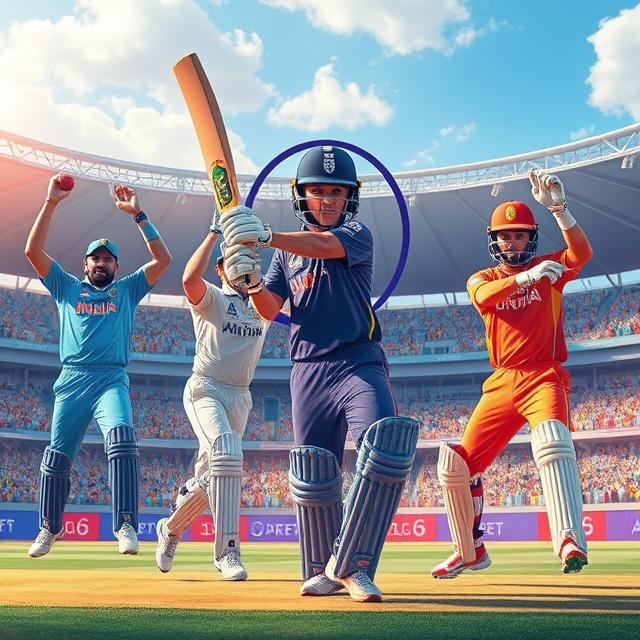Pakistan Cricket Board Calls Back Players from CPL: A Deep Dive

Pakistan Cricket Board Calls Back Players from CPL: A Deep Dive
The recent recall of Pakistan cricket players from the Caribbean Premier League (CPL) has sparked considerable debate and discussion. Was it a wise decision, or a missed opportunity? This article delves into the complexities surrounding this move, exploring the potential motivations, impacts, and lingering questions.
Why did the PCB act? What are the potential repercussions for both the players and the respective leagues? Find out now!
Understanding the CPL and its Place in Pakistan Cricket
The CPL, a T20 cricket league, has gained significant popularity, attracting top international players, including many from Pakistan. It offers a lucrative platform for players to showcase their skills, earn significant income, and gain valuable experience outside of the domestic Pakistan setup. However, the relationship between international cricket boards and leagues often involves complex negotiations and considerations, especially regarding player availability during crucial periods for national teams.
Pakistan, a nation with a rich cricketing heritage, has a strong emphasis on its national team’s performance in international tournaments. The PCB’s role is to nurture and protect the interests of Pakistani cricket, a responsibility that invariably involves balancing competing demands.
The Rationale Behind the PCB’s Decision: Balancing International and Domestic Priorities
The Pakistan Cricket Board (PCB) often faces the challenge of managing the dual demands of international and domestic cricket. The recall of players from the CPL could be interpreted as a prioritization of the upcoming international schedule. This could include:
- Team Preparation for Upcoming Events: Pakistan may have a significant tournament or series approaching, requiring the dedicated focus and training of their best players. The CPL schedule might be seen as hindering the players’ ability to reach optimal match fitness and preparation for their national responsibilities.
- Maintaining Player Form and Fitness: The intense schedule of professional leagues can sometimes strain the fitness of the players and potentially negatively impact their performance during important international matches. Bringing them back allows the PCB to closely manage this aspect.
- Management of Player Wellbeing and Consistency: A possible underlying factor could be concerns about player wellbeing. The demanding travel and fixture schedules of the CPL and the Pakistan national team, combined, could put pressure on a player’s physical and mental health and impact their long-term career. This is a crucial element the PCB needs to assess.
- Financial Incentives and Considerations: While CPLs offer lucrative opportunities, a potentially higher reward or opportunity for players may exist through focusing on domestic engagements and responsibilities. The PCB’s actions could be a negotiation for better financial arrangements within the national set up, where players’ engagement directly with the Pakistan cricket team might be given more importance than their engagements in international leagues
- Negotiation over Player Contracts and Release Clauses: Sometimes, the contractual obligations between the PCB and the players are not aligned with those of the leagues. This aspect plays a vital role in any decisions made by the PCB, particularly those involving player contracts that might need renegotiation.
Potential Implications on the CPL and Other Leagues
The PCB’s decision has significant implications for the CPL and other similar leagues. This includes:
- Impact on Player Recruitment and Retention: The CPL might face challenges in recruiting top-tier players in the future, as uncertainties about player availability become a significant factor.
- Impact on Future Player Contracts and Agreements: The CPL may need to adjust its player agreements, ensuring flexibility to adapt to potential calls back from national teams in critical times.
- Damage to Player Morale: Players might feel their dedication to the international leagues is not fully valued when facing frequent interruptions from their national obligations. This could impact player morale and reduce the attraction for players to participate in international leagues in the future.
Public Reactions and the PCB’s Reputation
The PCB’s decision has been met with diverse reactions from different stakeholders. Public perception often relies on understanding the nuances of the situation. The PCB’s reputation depends, in part, on how it manages such challenges and communicates its rationale effectively.
Conclusion: A Balance Between Competing Interests
The PCB’s decision to recall players from the CPL highlights the inherent complexities in managing the competing interests of international cricket, domestic leagues, and individual players. The need to balance these factors often involves delicate negotiations and careful considerations of the bigger picture. Transparency and clear communication between all parties involved are essential for maintaining healthy relationships and ensuring that the future of both international and domestic cricket remains strong and sustainable.
Ultimately, whether this particular move was a wise decision remains subject to ongoing scrutiny and the results of upcoming international matches. We will need to analyze these outcomes, as well as the subsequent decisions taken by other stakeholders, to arrive at a well-informed opinion.
The debate is far from over. The future of player availability and international cricket’s intricate tapestry of competing interests will continue to unfold. Stay tuned for further developments!
This article is intended for informational purposes only and should not be construed as professional advice.